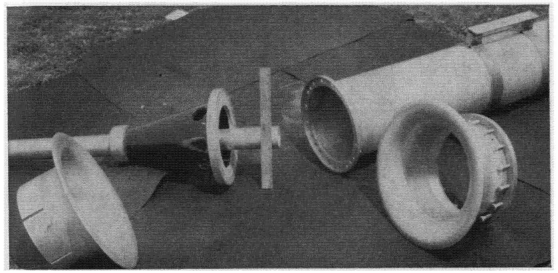| Radio Antenna Engineering is a free introductory textbook on radio antennas and their applications. See the editorial for more information.... |

|

Home  Radio-frequency Transmission Lines Radio-frequency Transmission Lines  Mechanical Construction of Open-wire Transmission Lines Mechanical Construction of Open-wire Transmission Lines  Supports Supports |
|||||||||||||||||||||||||






|
|||||||||||||||||||||||||
|
SupportsAuthor: Edmund A. Laport
A line of poles should be surveyed with a transit and set in a neat line. Where there are differences in grade level, the pole heights may be varied to keep the line straight in a vertical plane if best appearance is desired. Otherwise the line level can follow the grade with constant wire height above the ground.
A small change in the direction of the line may be made at a suspension-type pole where the suspension insulators hang at an angle, but when the direction of the line changes more than 45 degrees, the corner pole should be of the strain type and guyed on the outside to withstand the side stress of the bend. Where a sharp bend is wanted, it is best to make the bend over a distance of two or three spans if there is space enough and there is no interference with other lines or structures. An example is shown in Fig. 4.22. The recommended depths of setting for poles are shown in Table 4.4.
Guy anchors in soil should be set at the same depth. In rock, a guy anchor can be set in a drilled hole with molten lead retaining an eyebolt.
|
|||||||||||||||||||||||||
Home  Radio-frequency Transmission Lines Radio-frequency Transmission Lines  Mechanical Construction of Open-wire Transmission Lines Mechanical Construction of Open-wire Transmission Lines  Supports Supports |
|||||||||||||||||||||||||
Last Update: 2011-03-19


